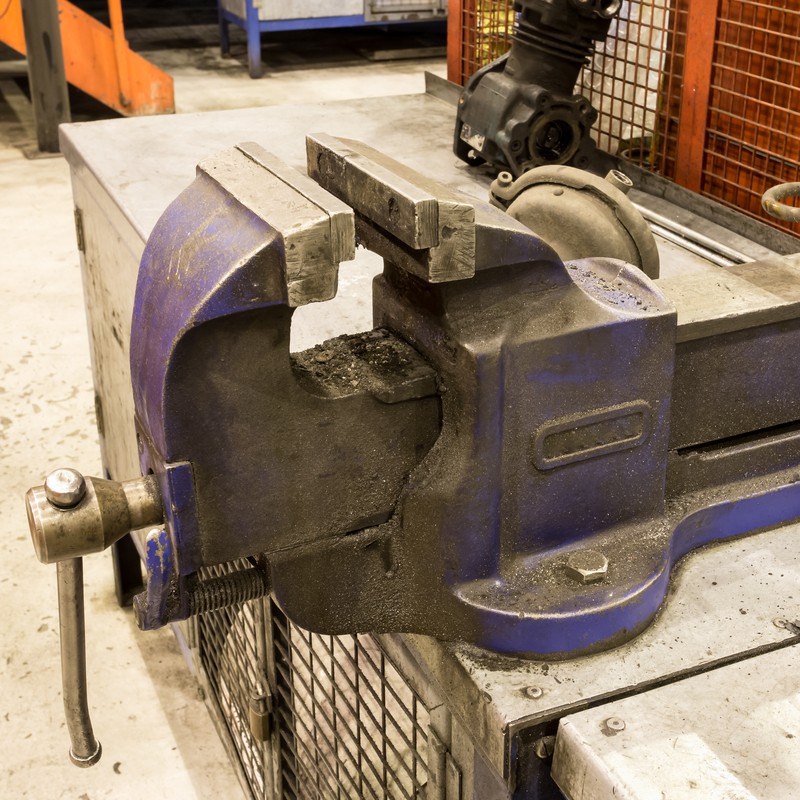Regardless of where you fall on the firearm issue, it is undeniable that in a SHTF scenario or survival situation, a person with a firearm is better equipped than a person without one.
This is particularly true if you are separated from your cache of food or in the midst of civil unrest.
A firearm allows the survivalist to hunt game and to provide for self-defense, but as important as it is to have a firearm in a survival situation, keeping it in good shape is equally important.
To that end, there are certain tools every survivalist must have, regardless of whether you have a handgun, shotgun or rifle in order to make sure the firearm is in optimum condition when you need to use it.
To learn the essential tools every firearm owner should have to help maintain their firearms, check out the next page.

Yes
@[1378427696:2048:Michael Sibilia]
Doubt you need to be worried about where your readers fall on the issue of firearms.
1. A Vise.
Before you can actually work on a gun, you must be able to hold it still. Because most of us are not born with a third hand, the best way to hold a gun still is with some sort of a vise.
For guns that accept detachable magazines, you can get specially-made blocks that snap into the mag well, and fit down into the vise, so you can secure the firearm without any part of it touching the vise itself.
You can also upgrade just about any vise by using non-marring jaws that stay put with magnets. That way you won’t scratch that pretty bluing job, or mess up that gorgeous stick of black walnut.
2. Bench Block.
Like a vise, a bench block is a way to help hold a gun steady while you drive a pin either into or out of it. Bench blocks come in different sizes, have holes in them that let pins drop free and clear, and are sometimes contoured to fit specific models of guns. Some of the best bench blocks are made out of really dense polymer that protects the finish of gun while you drive pins, but is solid enough to help you keep the gun in place while you work.
3. Nylon/Brass Hammer.
Sometimes, you do need to smack pins and parts to get them to go into place. But just like with a vise and the bench blocks, the trick is to do so without scratching, chipping, or otherwise dinging up the finish. One of the best tools for this delicate balancing act of just enough gentle force is the Nylon/Brass Hammer. You can use the brass end to put solid hits onto really stubborn pins. The nylon end is for those more delicate jobs.
4. Pin Punch.
Of course, you’ll also need a pin punch to move those pins. One of the best sources of pin punches is Starrrett. These are way more than just boring hunks of metal with different diameter heads. Starrett punches are finely made, with knurled center sections for precise control, and clear markings so you know exactly what size you’re handling. You can buy them separately, or just get the set, which might make the most sense, considering how many different pin sizes you’ll encounter.
5. Gunsmith Screwdrivers.
I’ve made this mistake myself a few times – using regular hardware store screwdrivers on the screws in my guns. Of course, I’ve boogered a few firearm screws in my time. And nothing screams out “Amateur!” quite like a scratched-up, marred screw head on an otherwise finely-finished gun.
Gunsmith screwdrivers are not like hardware store screwdrivers. The heads are specially beveled and tapered to perfectly fit into the screw heads and support them, so the edges of the slot aren’t damaged, and you don’t scratch off the finish, and otherwise just make a mess of them.
Quick question sense I can’t find anything that works, my muzzle brake won’t come off I put it into a vise but these cheap$#%&!@*guns today couldn’t withstand the strength I needed to use to unscrew it (as in the plastic body torques with the wrench). Any suggestions on how to loosen it?